The biography
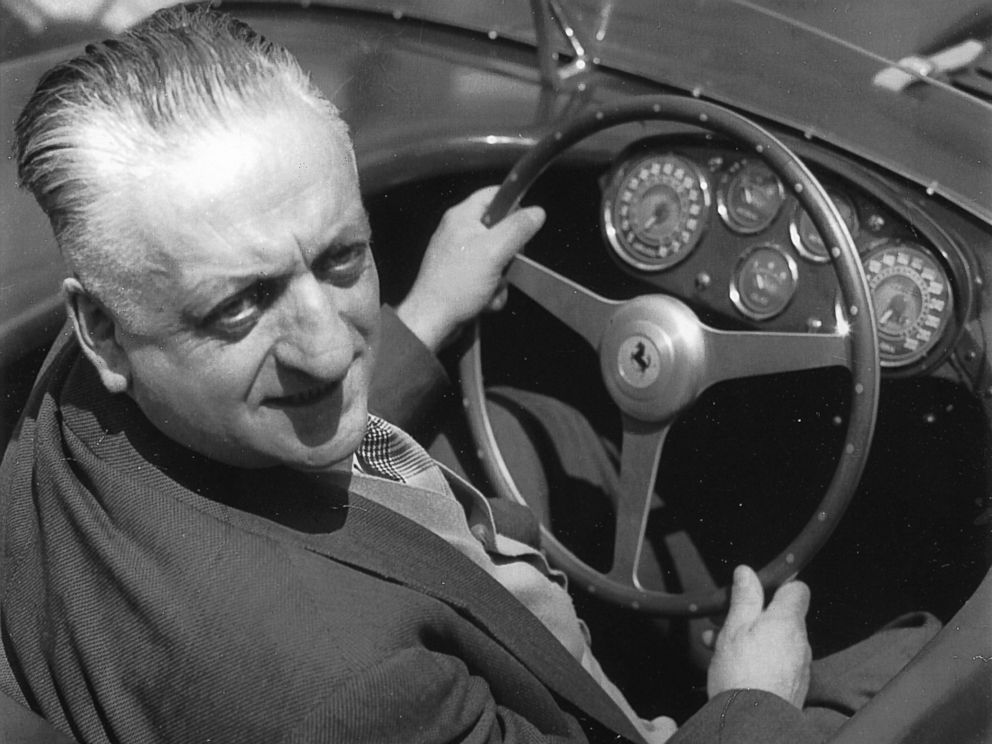
Enzo Anselmo Ferrari was an Italian motor racing driver and entrepreneur, the founder of the Scuderia Ferrari Grand Prix motor racing team, and subsequently of the Ferrari automobile marque. He was widely known as “il Commendatore" or "il Drake". In his final years he was often referred to as "l'Ingegnere" or "il Grande Vecchio (the Great Old Man)".
He was born on the outskirts of Modena on the 18th of February 1898. However, his birth isn’t registered until two days later because of heavy snow.
Enzo’s father owns a small metal engineering company employing around 30 people which builds bridges and roofs for the state railways.
Ten year old Enzo and his brother Alfredo are brought by their father to watch a race at the motor racing circuit on Via Emilia in Bologna. The race is won by Felice Nazzaro. Young Enzo is completely entranced by the action.
The Ferrari family is hit by a double tragedy in 1916 as both Enzo’s father and brother pass away. Enzo is forced to give up his studies after his father’s death and finds work as an instructor in the lathing school at the fire service workshop in Modena.
In 1917 Enzo serves in the Italian army during the First World War and is assigned to the 3rd Alpine Artillery Division. However, he becomes seriously ill and undergoes two operations before being honourably discharged.
Once he regains his health, Ferrari attempts to get a job with Fiat in Turin but to no avail.
At the end of 1918, he does, however, find work as a test-driver at a small company in Turin that builds the much-sought after Torpedos which were built on a light truck chassis.
Enzo moves to Milan to work for C.M.N (Costruzioni Meccaniche Nazionali), first as a test-driver and then later as a racing driver. He makes his competitive debut in the 1919 Parma-Poggio di Berceto hillclimb race in which he finishes fourth in the three-litre category at the wheel of a 2.3-litre 4-cylinder CMN 15/20. On November 23rd of the same year, he takes part in the Targa Florio but loses over 40 minutes after his car’s fuel tank develops a leak.
In 1920, after a series of races in which he enjoys mixed fortunes at the wheel of an Isotta Fraschini 100/110 IM Corsa, Enzo finishes second in the Targa Florio in a 6-litre 4-cylinder Alfa Romeo Tipo 40/60. This marks the start of a 20-year collaboration with the marque that will see Ferrari do everything from test-driving to racing to dealing before finally being appointed head of the Alfa Corse racing division, a position he holds until September 1939.
In 1921 Ferrari competes in several races as an official Alfa driver, delivering some impressive finishes such as a fifth position in the Targa Florio in May and a second at Mugello in July. He also has his first major accident in September that year when he goes off the road on the eve of the Brescia Grand Prix trying to avoid a herd of cattle blocking the race route.
In 1923 Ferrari wins the first Circuito del Savio.
The prancing horse emblem was created when Italian fighter pilot Francesco Baracca was shot down during World War I. Baracca gave Enzo Ferrari a necklace with the prancing horse on it prior to takeoff. Baracca was tragically shot down and killed. In memory of his death, Enzo Ferrari used the prancing horse to create the emblem that would become the world famous Ferrari shield. However the world first saw this emblem on an Alfa Romeo as Ferrari was still tied up with Alfa Romeo. It was not until 1947 that the shield was first seen on a Ferrari. This was the birth of Ferrari.
In 1924 Enzo Ferrari is made a Cavaliere (Knight) for his sporting achievements, his first official honour from the Italian state. He is made a Cavaliere Ufficiale in 1925. His passion for journalism sees him become one of the founders of the famous Corriere dello Sport newspaper in Bologna that same year too.
In 1927 Ferrari is made Commendatore by the Italian state in recognition of his services to the Nation in the area of racing. On June 5th of the same year, he wins the first Circuito di Modena in an Alfa Romeo 6C-1500 SS.
On May 20th 1928 Enzo wins the 2nd Circuito di Modena, once again at the wheel of an Alfa Romeo 6C- 1500 SS.
In 1929 Ferrari founds the Scuderia Ferrari in Modena. The main aim of this racing “stable” is to allow owner-drivers to race. Its foundation marks the start of a burst of frenetic sporting activity that will lead to the creation of an official team. The Scuderia fielded both cars (mainly Alfas) and motorbikes. In time it becomes a technical-racing outpost of Alfa Romeo and effectively takes over as its racing department in 1933.
Enzo Ferrari completes his final race as a driver at the Circuito Tre Province on August 9th 1931. He finishes second to Nuvolari in an Alfa Romeo 8C -2300 MM. The decision to quit racing comes as result of the impending birth of his son Alfredo, better known as Dino (19th January 1932), and his growing workload as head of the Scuderia.
In 1937 the Scuderia Ferrari builds the Alfa Romeo 158 "Alfetta" which goes on to dominate the international racing scene.
The Scuderia Ferrari is wound up at the end of 1937 and at the beginning of 1938 Enzo Ferrari takes up his new position as head of Alfa Corse and moves to Milan.
On September 6th 1939, Enzo Ferrari leaves Alfa Romeo under the proviso that he does not use the Ferrari name in association with races or racing cars for at least four years. From that moment on, beating Alfa Romeo in one of his own cars becomes a passion.
On September 13th Ferrari opens Auto Avio Costruzioni on Viale Trento Trieste in Modena, the headquarters of the old Scuderia Ferrari.
The war interrupts racing but 1947 brings the first Ferrari, the 815 Sport.
In 1940 Auto Avio Costruzioni builds two versions of what Ferrari calls the 815 (8 cylinders, 1500 cc) on a Fiat platform for the last pre-War Mille Miglia. They are driven by a young Alberto Ascari and Marquis Lotario Rangoni Machiavelli of Modena but fail to shine.
At the very height of the War in 1943, Auto Avio Costruzioni moves out of Modena to Maranello where the first part of what would later become the Ferrari factory is built. In Modena, the company had worked for the National Aeronautical Company of Rome, Piaggio and RIV, but in Maranello the focus is mostly on fabricating grinding machines which were copies of original German tooling machines.
The factory is first bombed on November 4th 1944 and then hit again the following February but is quickly rebuilt.
Ferrari begins work on designing the first Ferrari in late 1945. His ambitious plan is to power it with a V12 engine. In fact, this particular architecture would become a fixture throughout the company’s entire history. The reason Ferrari chosen a V12 was its versatility: it was just as suited to use on sports prototypes as single-seaters and even Grand Tourers.
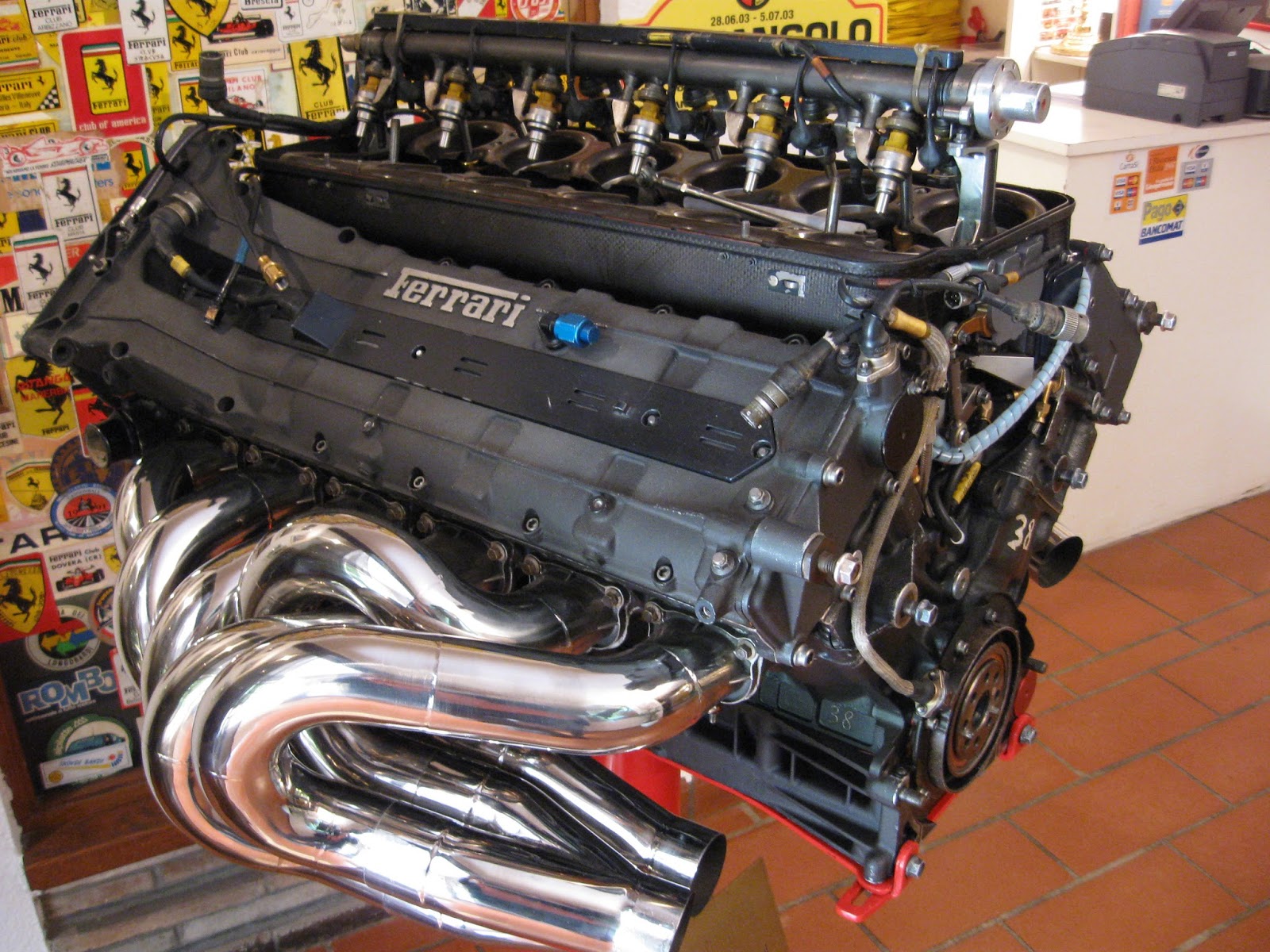
In December 1946 Ferrari releases specifications and drawings of his new car to the press.
At the end of the conflict, Ferrari decided to start making cars bearing his name, and founded Ferrari S.p.A. in 1947.
On March 12th, 1947 he takes the car, now known as the 125 S, out for its first test-drive on the open road.
Having won its first Mille Miglia in 1948, its first Le Mans 24 Hour Race in 1949 and its first Formula 1 World Championship Grand Prix in 1951, Ferrari becomes world Champions for first time in 1952 thanks to Alberto Ascari who repeats his feat the following year.
In 1952 Ferrari is made a Cavaliere del Lavoro in recognition of his services to industry and to enhancing Italy’s international reputation.
In 1956 Enzo’s beloved son, Alfredo, or Dino as he was better known, dies of muscular dystrophy. Ferrari had kept his son involved in the design of a new 1500 cc V6 until the very end of his life. The engine finally debuts 10 months after Dino’s death. However, it and all Ferrari V6 engines are named in his honour.
In 1960 Ferrari becomes a Limited Liability Company and Enzo is conferred with an Honorary Degree in Mechanical Engineering by Bologna University.
In 1962 Enzo Ferrari is presented with the Hammarskjöld Prize by the United Nations.
1963 sees Enzo Ferrari build the professional industry and artisanship training institute in Maranello. Dedicated to Alfredo “Dino” Ferrari, it continues to provide the company with special technicians to this day.
In 1965 Enzo Ferrari wins the Columbus Prize.
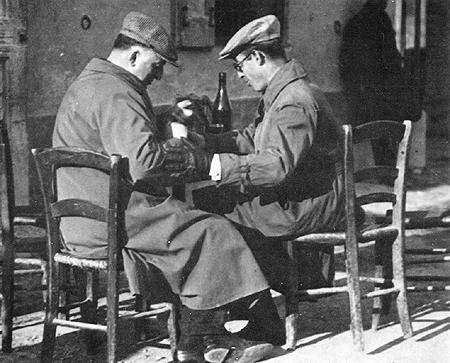
By the end of the 1960s, increasing financial difficulties as well as the problem of racing in many categories and having to meet new safety and clean air emissions requirement for road car production and development, caused Enzo Ferrari to start looking for a business partner. In 1969 Ferrari sold 50% of his company to Fiat, with the caveat that he would remain 100% in control of the racing activities and that FIAT would pay sizable subsidy till his death for use of his Maranello and Modena production plants. Ferrari had previously offered Ford the opportunity to buy the firm in 1963 for US18 million but, late in negotiations, Ferrari withdrew once he realised that he would not have been able to retain independent control of the company racing program. Ferrari became joint-stock and Fiat took a small share in 1965 and then in 1969 they increased their holding to 50% of the company. (In 1988 Fiat's holding rose to 90%).
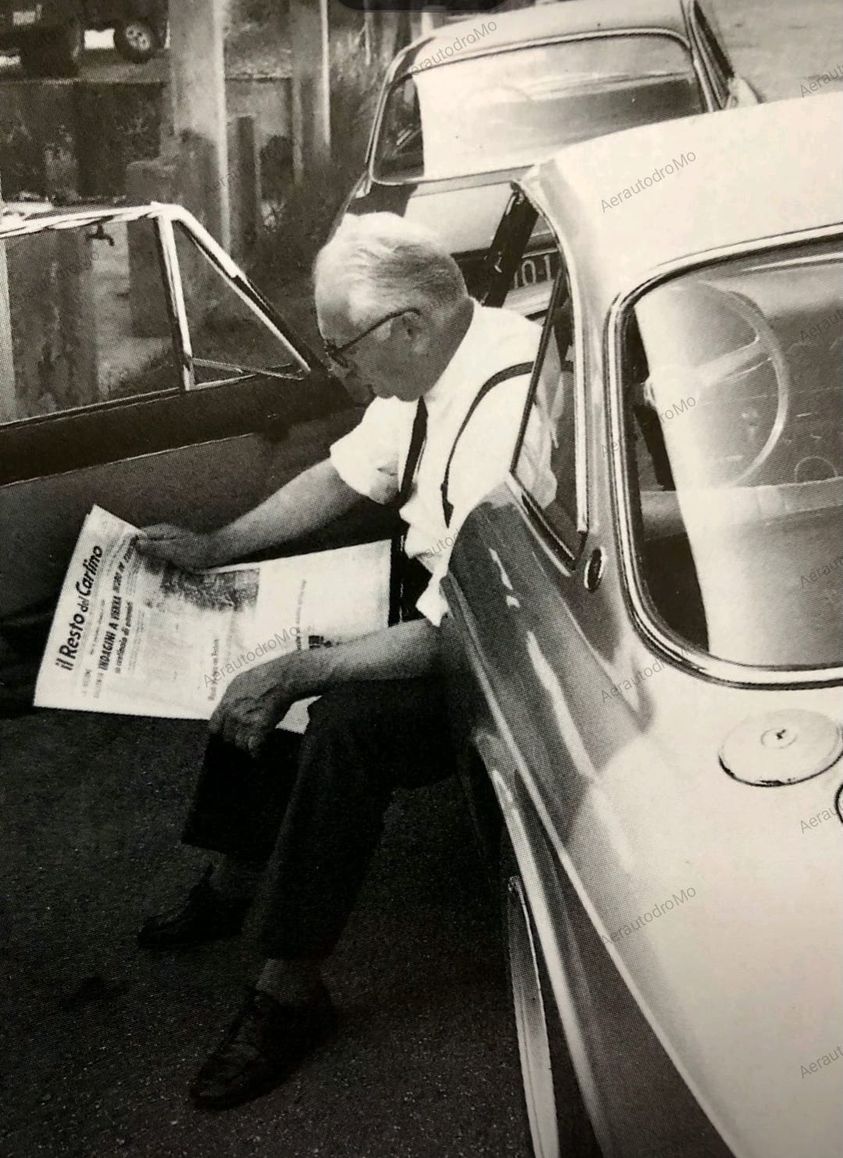
Enzo Ferrari relaxes with the Resto del Carlino during Jacky Ickx's tests in 1970. Photo by Gaspare Galante.
In 1970 Enzo Ferrari is presented with the Gold Medal for Culture and Art by the President of Italy.
In 1971 Enzo Ferrari decides to build the Fiorano Circuit which will be officially opened on April 8th 1972.
Following the agreement with FIAT, Ferrari stepped down as managing director of the road car division in 1971. In 1974 Ferrari appointed Luca Cordero di Montezemolo as Sporting Director/Formula One Team manager. (Montezemolo eventually assumed the presidency of Ferrari in 1992, a post he held until September 2014). Clay Regazzoni was deputy champion in 1974, while Niki Lauda won the championship in 1975 and 1977. After those successes and another title for Jody Scheckter in 1979, the company's Formula One championship hopes fell into the doldrums.
In 1979 Ferrari receives the honorary title of Cavaliere di Gran Croce della Repubblica Italiana from Pertini.
In 1981 Ferrari attempted to revive his team's fortunes by switching to turbo engines. In 1982, the second turbo-powered Ferrari, the 126C2, showed great promise. However, Gilles Villeneuve was killed in May, and team mate Didier Pironi had his career cut short in a violent end over end flip on the misty back straight at Hockenheim in August after hitting the Renault of Alain Prost. Pironi was leading the driver's championship at the time; he would lose the lead as he sat out the remaining races. The Scuderia went on to win the Constructors Championship in at the end of the season and in 1983, but the team would not see championship glory again until Ferrari's death in 1988. The final race win for the team he saw was when Gerhard Berger and Michele Alboreto scored a 1-2 finish at the final round of the 1987 season in Australia.
In 1987 the F40, the last car to be created under Enzo Ferrari’s management, is unveiled.
In 1988 the University of Modena confers Ferrari with an Honorary Degree in Physics.
Enzo Ferrari died on 14 August 1988 in Maranello at the age of 90. His death was not made public until two days later, as by Enzo's request, to compensate for the late registration of his birth. He witnessed the launch of the Ferrari F40, one of the greatest road cars at that time, shortly before his death, which was dedicated as a symbol of his achievements.
The Italian Grand Prix was held just weeks after Ferrari's death, and the result was a 1–2 finish for Ferrari, with the Austrian Gerhard Berger leading home Italian and Milan native Michele Alboreto; it was the only race that McLaren did not win that season.
In 1994, he was posthumously inducted into the International Motorsports Hall of Fame.
He was inducted into the Automotive Hall of Fame in 2000.
In 2002 the first car to be named after him was launched as the Enzo Ferrari.
After Ferrari's death, the Scuderia Ferrari team has had further success, winning the World Drivers' Championship in 2000, 2001, 2002, 2003, and 2004 with Michael Schumacher and in 2007 with Kimi Raikkonen.
Enzo Ferrari spent a reserved life, and rarely granted interviews. He rarely left Modena and Maranello, except for when the annual Italian Grand Prix at Monza just outside Milan took place, or when he took a trip to Paris to broker a compromise between the warring FISA and FOCA parties in 1982.
He married Laura Dominica Garello (c. 1900–1978) on 28 April 1923, and they remained married until her death. They had one son, Alfredo “Dino”, who was born in 1932 and groomed as Enzo's successor, but he suffered from ill-health and died from muscular dystrophy in 1956. Enzo had a second son, Piero, with his mistress Lina Lardi in 1945. As divorce was illegal in Italy until 1975, Piero could only be recognized as Enzo's son after Laura's death in 1978. Piero is currently a vice-president of the Ferrari company with a 10% share ownership.
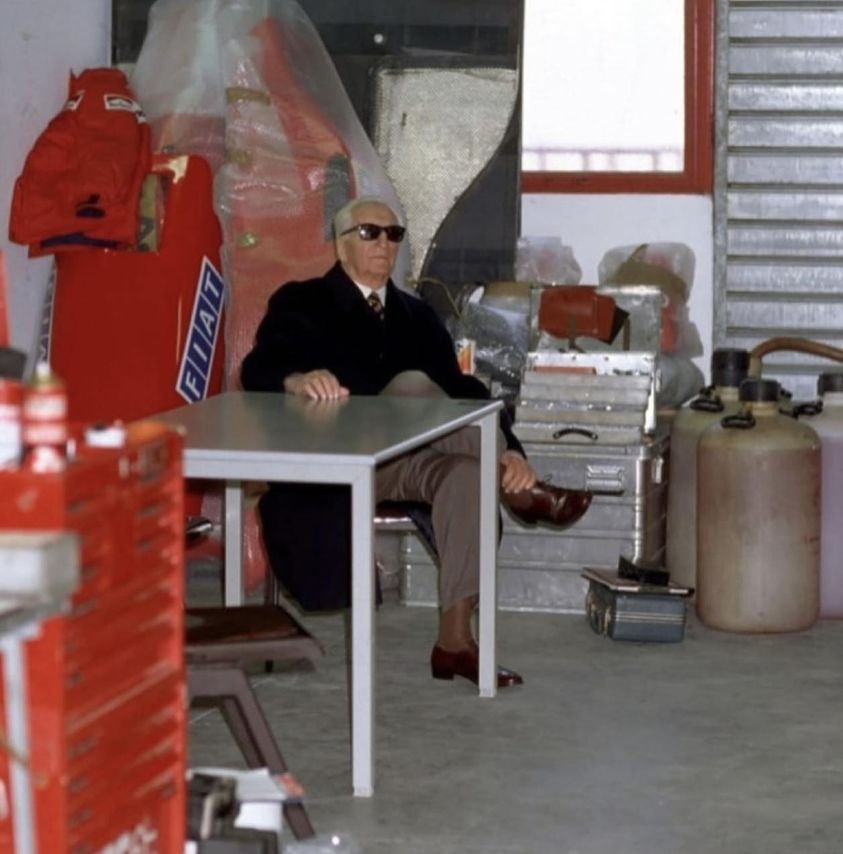
“When a man has goals to achieve he cannot grow old.” Enzo Ferrari
Ferrari's management style was autocratic and he was known to pit drivers against each other in the hope of improving their performance. Some critics believe that Ferrari deliberately increased psychological pressure on his drivers, encouraging intra-team rivalries and fostering an atmosphere of intense competition for the position of number one driver. “He thought that psychological pressure would produce better results for the drivers,” said Ferrari team driver Tony Brooks. "He would expect a driver to go beyond reasonable limits... You can drive to the maximum of your ability, but once you start psyching yourself up to do things that you don’t feel are within your ability it gets stupid. There was enough danger at that time without going over the limit.”
During the late 1950s and 1960s seven Ferrari drivers – Alberto Ascari, Eugenio Castellotti, Alfonso de Portago, Luigi Musso, Peter Collins, Wolfgang Von Trips and Lorenzo Bandini - were all killed driving Ferrari racing cars. Although such high death toll was not unusual in motor racing in those days, the Vatican newspaper L’Osservatore Romano described Ferrari as being like the god Saturn, who consumed his own sons. In Ferrari's defense, contemporary F1 race car driver Stirling Moss commented: “I can’t think of a single occasion where a (Ferrari) driver’s life was taken because of mechanical failure.”
In public Ferrari was careful to acknowledge the drivers who risked their life for his team, insisting that praise should be shared equally between car and driver for any race won. However, his longtime friend and company accountant, Carlo Benzi, related that privately Ferrari "would say that the car was the reason for any success.”
Following the deaths of Giuseppe Campari in 1933 and Alberto Ascari in 1955, both of whom he had a strong personal relationship with, he chose not to get too close to his drivers, out of fear of emotionally hurting himself. In his later years, Ferrari rarely left Modena, and never went to any Grands Prix outside of Italy; he was usually seen at the Grands Prix at Monza near Milan and/or Imola, which wasn't far from the Ferrari factory, and was named after the late Dino.
“Enzo Ferrari was sometimes a prisoner of his myth. He has never been to Rome in his life, he has never taken an elevator, he has never taken a plane. I'm sure he was ready to do it but he never wanted to maintain the myth.” Luca di Montezemolo
“He didn't go to the races and he didn't even go to the Italian Grand Prix. He went to the tests for the Italian Grand Prix but never went to the Grand Prix itself.” Tony Brooks (1956-1961 six F1 race wins)
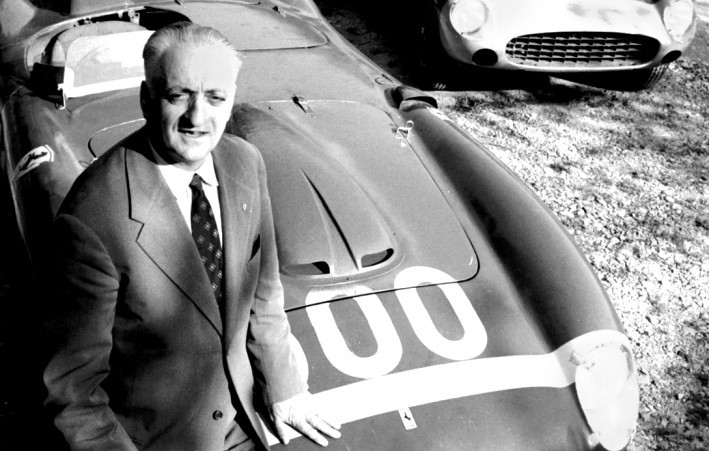
Enzo’s highlights and quotes
- A young man who had dreamed of being Ferrari and had become.
- To him, the road cars were the means to support the Formula 1.
- For 30 years, he did not move from Modena; the whole world was coming to him.
- Gangsters, playboys, millionaires - all were buying his cars.
- Each Ferrari win for him was dependent more on the car than the pilot.
- He had cried only once in 40 years.
- We refrain from stating the number of horse-power of our engines. If we win, we had more, if we lose – less.
- He gave his life for Ferrari and changed the ones of all those he met.
- If he were a politician, he would have been Machiavelli.
- To the wife of a dead pilot telling him how her husband had been unlucky, he answered: we need lucky drivers.
- On Lauda at Fuji: the pilot must take risks and must win.
- After Tazio Nuvolari, he was always searching for the perfect driver for Ferrari; Gilles Villeneuve had only been able to be the one. When Michael Schumacher arrived, Enzo had already passed away.
- Nobody like Tazio Nuvolari combined such high sensitivity of the machine to an almost inhuman courage.
- The engines are like women - you must know how to touch the most sensitive parts.
- I found men who undoubtedly loved the car like me. But perhaps I have not found others with my obstinacy. Driven by this dominant passion in life, I have taken the time and taste for almost everything else
- I have no interest in anything but the race car.
- When a pilot dies, at least two women swoon.
- Never do good things for people if you're not prepared for ingratitude.
- For him, there was only the sound of his cars and the silence of his reflections. He was not a jovial Emilian. He was a man who lived by himself.
- We do not forgive anything to anyone, so be wise not to forgive anything to Ferrari as well.
- Dreams keep a man alive. The fate is largely in our hands, if we know clearly what we want and we are determined to get it.
- When his two cars finished first and second, he said: “We didn’t get the first, second and the third place.”
- When he turned 90, he suspended work in his factory and, despite the pressure by all across the world, he admitted only his 1800 employees to his birthday dinner at the factory.
- I like to think that Ferrari can build drivers as well as cars. Some say that Gilles Villeneuve is crazy but I say - let him try.
- I allowed myself to judge the car as a conquest of freedom.
- A balance sheet of my life could be done only after they will have taken me to the cemetery.
- Maranello was based on agriculture before the arrival of Enzo Ferrari, and the farmers were the ones that became his mechanics. He took no employees outside the perimeter of Modena.
- I have no credits from no one, I did what I liked.
- Since the death of my son, I have never seen a racing track outside of television.
- In England, the land of the Formula 1, the most prestigious car magazine held a poll that crowned Enzo Ferrari the man of the century.
- The race car for me is like a son.
- Von Karajan said that, listening to a 12-cylinder Ferrari, he hears a harmony that no teacher will ever interpret.
- There’s something different in our cars, not better or worse, but different, as there is the intellectual contribution of man.
- The best car is the one that breaks the meter after the finish line.
- The second is the first of losers.
- The best win is the next.
- Think as a winner and act as a winner. You’ll be quite likely to achieve your goal.
Videos



Comments
Authorize to comment